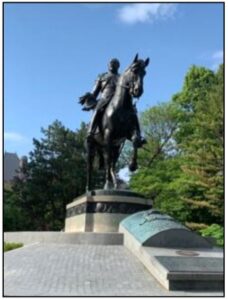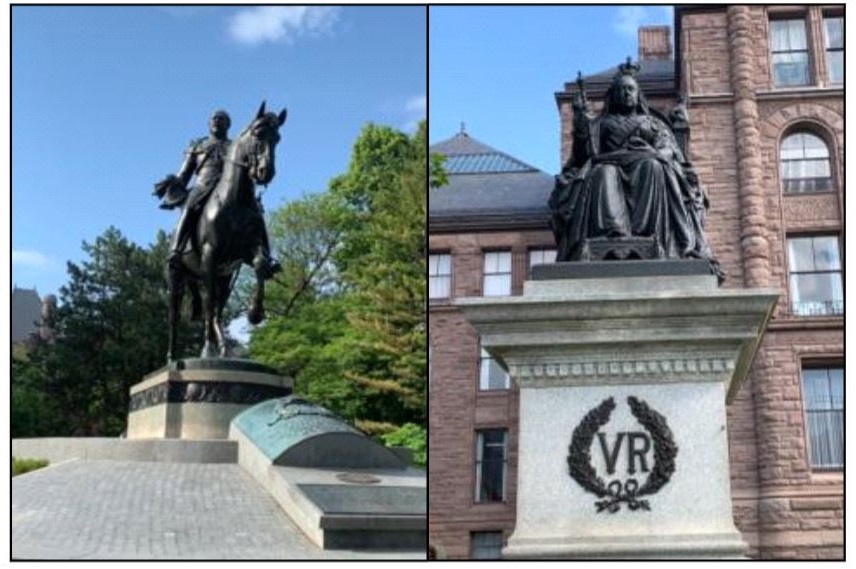
Last month, a former US senator and tv commentator, was dismissed by CNN when he said “We birthed a nation from nothing … we have native Americans but … there isn’t much Native American in American culture” to a group of young conservatives gathered in April to hear him speak about the religious values of European settlers in the US.
Why religious values, you may ask. Rick Santorum is Roman Catholic. The Native American Journalists Association found this offensive and insulting and called for his firing from CNN. The association issued this statement: By effectively dismissing the millenia-long presence of Native Americans and the genocide inflicted on them as the Christian settlers transformed and expanded their colonies into the United States of America, he (referring to Santorum) angered many within the Native American community and beyond.
This past weekend saw the toppling of the statue of Egerton Ryerson who designed the Canadian public school system. Notable was his contribution to education that a university was named after him. But he is also known as the creator of the residential school system and this legacy provoked protestors to deface, topple and behead his statue after 215 remains of indigenous children were found in a former residential school site in Kamloops, BC. I find this a sad outcome to what could’ve been a lasting legacy. Canada’s public school system has provided free education to young people of different denominations and has produced politicians and celebrities, some even prospering south of the border.
When the George Floyd protests came into Canadian soil, the statue in Queen’s Park of John A. Mcdonald, the first Prime minister of Canada, was splashed with pink paint. Queen’s Park legislature did not wait for further defacing. It wrapped the statue in black plastic and stored it inside the legislature. A sad fate for a famous name in Canadian history.
First world countries like Germany, the US and Canada all have dark history. Germany has a really horrific one with Nazism which Germans would rather forget. The country has been making an effort to atone through “rituals of repentance and understanding” starting in the 60s. Monuments, teachings, works of art, architecture, protocols and public policy now characterize this country which has adopted the slogan “never forget”, as discussed by Michele L. Norris, an opinion columnist in Washington Post, in her article of June 3rd, 2021, “Germany faced its horrible past. Can we do the same?” The Tulsa massacre became the focus of the US when President Biden visited the site where it happened 100 years ago. Not that many Americans are aware that 300 black people, prospering in that part of the city, were killed by whites over an unfounded rumour involving a white woman and a black man. The US has an ugly history of slavery and racism which permeates these days. When it boiled over with the death of George Floyd at the hands of police officers, statues of Columbus and Confederate officers came tumbling down.
I personally don’t agree with defacing or removing statues of people who contributed to the betterment of a nation. John McDonald was not just the first Prime Minister of Canada. He contributed to the birth of this country. But he built it on the backs of the indigenous people and for this, his statue in Queen’s Park was splashed with pink paint, most likely done by the same people who splashed pink paint on the statue of Ryerson.
Miss Norris of Washington Post mentioned the term “collective memory” referring to how groups of people remember past events in deciphering a country’s identity and soul. History is a story of events and people often told by word of mouth and passed on to younger generation by older people. It gets recorded and later taught in schools. When I was in school, I learned that the Portuguese explorer Ferdinand Magellan discovered the Philippines. Later, after I graduated from university, the narrative changed. Some historians challenged the word “discovered” arguing how can a country be discovered when that country was already existing, thriving, trading with Muslims and Chinese who docked their ships in Philippine waters.
I personally think that statues should remain where they are because they remind people of what the country went through to get to where it is. As Henry Olsen, another opinion columnist for Washington Post says in his article “The anti statue movement has taken a turn into absurdity” dated June 22, 2020, “Knocking down or defacing statues of national founders or heroes not only displays ignorance of history but also assaults the principles of Western civilization that allow for racial progress to continue.”.
In the pic, equestrian statue of Edward VII at Queen’s Park




